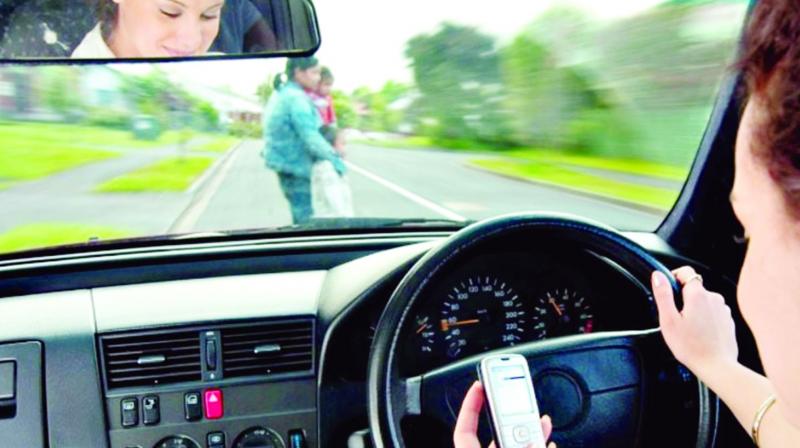Drivers reach for food, cells, cause accidents
Visual distraction major cause for fatalities among teens.

Hyderabad: Teenagers who reach for objects such as food or make-up while driving increase their risk of crashing by nearly seven times, according to a research conducted by the National Institute of Health and published in the American Journal of Preventative Medicine.
Teens using a cellphone while driving doubled their chances of crashing. Those who were reaching for something while driving increased their risk nearly seven times, which researchers attributed to a combination of distractions, including taking their eyes off the road and their hands off the wheel.
More than 70 per cent of fatal road crashes in India in 2017 involved adults in the 18-45 year age group, according to a report by the Ministry of Road Transport and Highways. Fatal road accident victims largely constitute young people in the productive age group. Young adults in the age group of 18-45 years accounted for 72.1 per cent of victims during 2017. People in the working age group of 18- 60 years accounted for 87.2 per cent in the total road accident fatalities, according to the report.
The study by the NIH is the first to use real-time driving data to study the impact of visual distraction.
Vinod Kumar Kanu-mala, founder of the Indian Federation of Road Safety, says 90 per cent of the crashes in the city occur due to the negligence of the driver.
“The other 10 per cent of accidents are due to infrastructure faults like roads and signals. Crashes can be avoided if drivers are a little cautious. In crashes where teenagers are involved, the reason is distraction by objects like cellphones, water bottles, make-up kits and others,” he says.
Researchers followed 82 newly licensed teenage drivers in Virginia over a one-year period, equipping their vehicles with cameras and GPS technology to track the driver’s activity and environment. After one year, 43 of the drivers did not experience a crash, while 25 had one crash and 14 had two or more crashes.
With data charges getting cheaper, youngsters get more addicted to their mobile phones and social media. Driving while messaging is a big concern and there is no technology to detect drivers affected by visual distractions.
“There are no gadgets to keep an eye on the people who are dividing and chatting on social media simultaneously, or talking. CCTV cameras can't trace them properly. The only option left is contact enforcement. There should be proper gadgets to put a check on this type of violations,” said Mr Kanumala.
The study’s authors suggest that teenage drivers may benefit from technological and behavioural interventions that will keep their eyes on the road at all times and discourage engagement in distracting secondary tasks.

